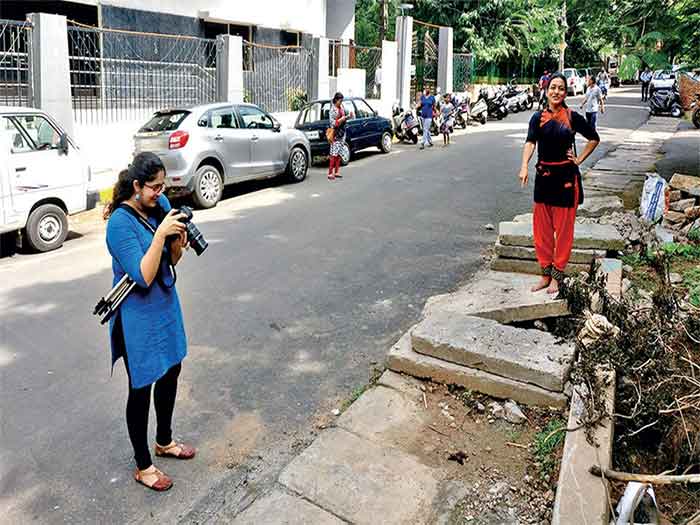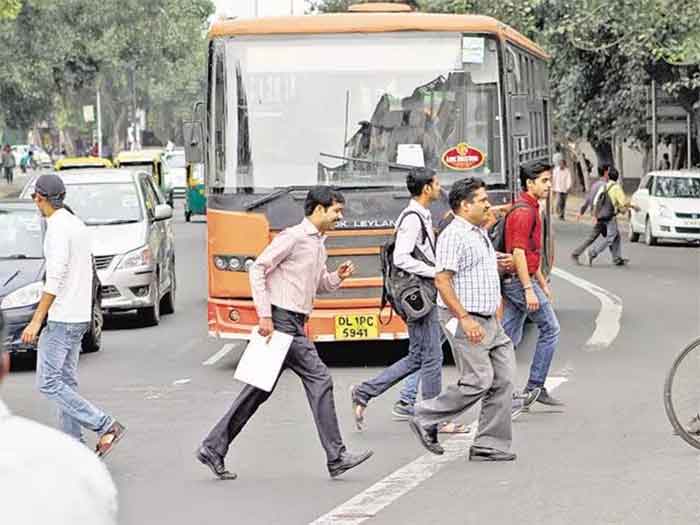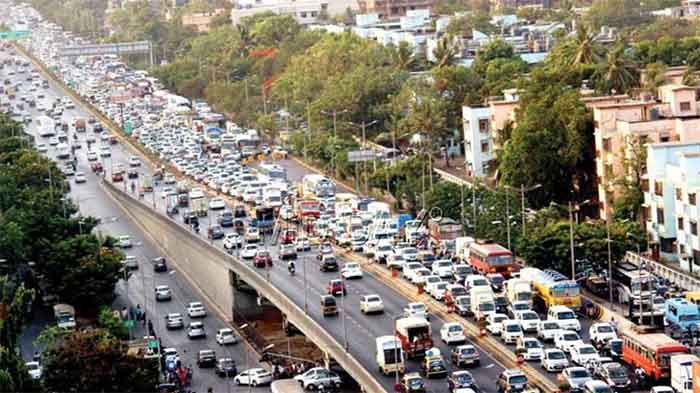
Imagine you are driving your car and you notice garbage in the middle of the road, the heap is so big that you have to navigate around it, but that might be risky as the road is full of drivers like you who are in equal hurry. You eventually decide to wait and once the rush and the risk is less you somehow manage to go past that garbage heap. Imagine the amount of inconvenience you go through, the anxiety you develop and the number of people you curse for creating such a nuisance.
You are not alone in your miserable commute as this is more or less the nuisance most Bangaloreans including me have to go through everyday to reach my office by walking. Out of my 850m walk to office, approximately 370m stretch is a footpath on which I stumble across garbage, uneven slope and walking surface, animal poop, private garden, discarded old carts, construction debris, broken manholes slabs, parked vehicles, stretches crowded by customers of petty shops, occasionally even a grill gate just pops up in the evenings used by delivery boys as an entrance for a popular eating joint. And if this was not punishment enough, sometimes people also mount on the footpath in their two-wheeler to surpass traffic congestion. I get down multiple times on the main road, tip-toe across the obstacles and get back up on the footpath. My rudimentary arithmetic ability tells me that assuming each of the mentioned events occurred just once, even in that scenario, I come across an impediment every 33m of walking. But I am young and physically able. What if this commute was part of everyday life of an elderly person, a school going child or a specially-abled individual?
Most footpaths across Bangalore share a similar miserable fate. In the ever growing silicon valley of India, the focus of policy makers and administrators is often limited to catering to vehicles plying on the roads and mobility infrastructure is planned to meet the demand of traffic. A pedestrian is a spectre and a functional stretch of footpath a fantastic and unfulfilled dream. Recorded figures state, at least one pedestrian was killed every two days on Bengaluru’s arterial roads in 2017. These numbers did not come down even during the pandemic despite reduction in vehicular traffic. As per National Crime Records Bureau (NCRB) report, Bengaluru accounted for second-most pedestrian fatalities, a staggering 163 deaths in 2020; deaths that were unfortunate and certainly avoidable. Lack of administrative will to expand and improve footpath infrastructure also implies that walking as a form of commute is not considered significant enough to invest on. The deplorable state of footpaths discourages people from walking which is a healthier and greener alternative of commuting. With urbanization expected to reach 50% globally by next decade, vehicular traffic management in cities will become a major challenge for urban planners and the state. What are other global cities doing about it?
Among some of the most walkable cities in the world, the closest in comparison to Namma Bengaluru is Paris. In Bengaluru, walking accounts for only 8% of overall trips whereas the percentage of people who walk for over 1 km in Paris each day is 55%. Strikingly, Paris and Bangalore house the same population but Paris is just one-seventh the size of Bengaluru. It is experimenting with something called the ‘15-minute city’ to override its population density and limited space into its strength by creating neighborhoods that boast of all required amenities and facilities and are accessible by foot or cycles. Although marred by the criticism of gentrification, the concept talks of “giving streets back to people” by relocating road space for walking and cycling. Similar initiatives are being experimented in several other cities across the globe like Barcelona, Detroit, Shanghai, Singapore etc. Nationally, the city of Pune has ranked highest among Indian cities in the walkability index and has taken considerable strides in making roads more pedestrian-friendly. Although several initiatives have been taken for the cause of footpaths and city streets by civilians and administrators, the apathy of pedestrians is far from over. What is the way forward for ‘Namma Ooru’ to reclaim ‘Namma Raste’ for pedestrians young and old? And why does expansion of footpath infrastructure matter for Bruhat Bengaluru Mahanagara Palike’s (BBMP) commitment to the Paris Climate Agreement?
While there is no dearth of models, recommendations or resources when it comes to footpath planning, what is lacking is a concrete city-wide vision of footpath expansion, improvement and enhancement and a serious will to take action on existing best practices. It is high time to consider the safety and comfort of pedestrians by investing in footpath infrastructure that accounts for accessibility, connectivity and other allied amenities like pedestrian crossings, adequate lighting etc. However, it cannot be undertaken in isolation and must account for existing laws, inclusivity and principles like social justice and equity. For instance, eviction of street vendors seems like a solution to footpath encroachment but such actions must be supplemented by demarcation of vending and non-vending zones in the city and uphold rights as enshrined in the Street Vendors Act, 2014. Master plans for the city must reflect pushing out of cars in favor of footpaths, cycle lanes and most of all green spaces. Simultaneously, urban local bodies represented by the public will have to play a crucial role in process implementing this at a ward level. Transitioning to such active mobility practices can be an efficient way to reduce mobility emissions, decarbonize urban transportation as highlighted in this blueprint for achievement of BBMP’s climate neutrality goals.
Footpaths as urban commons reflect so much more than just a mode of commute. Its ubiquity represents essentiality and demarcates it as a fundamental part of cities. They are not merely assets beside roads but hybrid spaces on their own that represent public space in myriad ways- social interaction, social milieu while also catering to recreational use. While economic rebooting is underway, what is also required parallelly is social reconceptualization of cities as a space for the individual. The idea of a walkable city provides a perfect opportunity to rethink and reimagine urban spaces as central for urban residents rather than cars and mega infrastructure. Cities planners have for long treated the humble footpath as subalterns, lying at the periphery of urban mobility policies; however the need of the ‘planet’ and ‘pedestrians’ calls for investment in developing scientific footpaths critical to fulfilling SDG11 and ensuring people like me get to exercise and enjoy their fundamental right to walking.
Shrestha Chowdhury has a Master’s degree in Developmental Studies from Christ University, Bangalore. A Bachelor of Arts in English, she decided to transit into the development sector. She is enthusiastic about urban issues. Her areas of interest include urban water governance, urban wetlands and other commons, environmental and social justice. She has formerly worked as a Research Associate and Research Officer. Currently, she is associated with SELCO Foundation as Project Coordinator-Documentation & Analysis.
















































